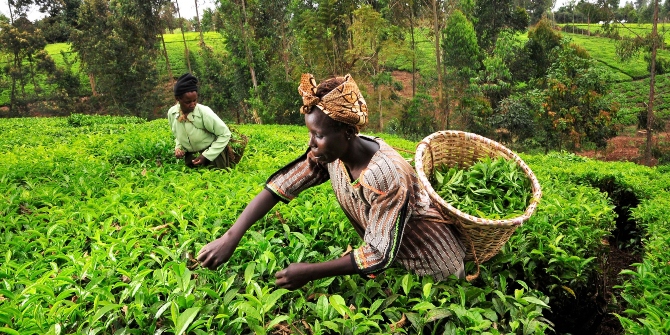Environment, social, and governance reporting (ESG) has failed to produce a reduction in the negative impacts of business activity. Companies produce reports, but reporting has become a goal in itself—not addressing the issues. Harpinder Sandhu writes that for the goal to shift to “action for sustainable development”, companies must incorporate the true cost accounting (TCA) tool, which includes a dollar value of all negative impacts in the balance sheet.
Corporations increasingly use environmental, social, and governance reporting (ESG) to demonstrate their social and responsible agenda. However, to manage the changes that their activities cause in the social, natural, and economic environment, companies need to measure impact too. ESG rankings and scores fall short in that task. They are ineffective in catalysing a strategic response to reduce impact. Another tool, true cost accounting (TCA), can provide monetary measurement of these impacts across four types of capital (human, social, natural, and produced). Corporations improve their decision-making when each impact is included in their balance sheets, which open the way for sustained competitive advantage.
In other words, companies’ power to change their operations to minimise impacts is driven by the numbers or dollars that get written in their ‘profit and loss’ statements. What matters the most in the social and natural infrastructure of a company, society, and nation is often not measured and is seldom reported in the accounts. There is no invoice from ‘mother nature’ if business activity results in polluting water, land degradation, emission of greenhouse gases, pushing species to extinction, etc. Similarly, society does not ask for collective remuneration if a business decision leads to social inequities such as a wider gap between rich and poor, low wages and unhygienic work conditions, social fabric breakdown, factory closures, mass movement of people, loss of livelihood of vulnerable communities, etc. It is true that corporate social responsibility reports (CSR) have a long history, using various reporting frameworks, including, but not limited to, Global Reporting Initiative (GRI), Dow Jones Sustainability Index (DJSI), ESG, etc.
All businesses, small, medium, or large, depend on four types of capital – human, social, natural, and produced. Human capital, as defined by Theodore Schultz, a Nobel Laureate in Economic Sciences, is a stock of educational capital that humans invest in themselves. It also includes individuals’ health, knowledge, skills, and motivation that are essential for productive work. Social capital comprises societal interactions, relationships, and formal or informal institutions associated with the economic system. Natural capital includes a stock of well-functioning biodiversity and ecosystems that provide numerous goods and services, supporting life on the planet and facilitating the provision of raw material for industry. Produced capital is described as financial, manufactured, and built capital essential to operate business. Despite their significance, all business operations—ranging from sourcing raw material to processing, transporting, manufacturing, and consuming goods and services—result in impacts on the natural, social, and human capitals that are not disclosed in company accounts. They thus remain outside the decision-making process and policy response. From the short to the long term, all business activities are likely to be affected by the risks posed by these impacts on human, social and natural capitals. The big challenge for the business community is to measure and disclose these impacts to a wide range of stakeholders, including suppliers, manufacturers, distributors, retailers, consumers, and policymakers, so that an appropriate response can be provided. The question is how to measure, quantify, and economically value a company’s impacts on nature, society, and people.
Assessment of integrated profit & loss statements
In short, true cost accounting implies measuring and quantifying companies’ social, environmental, and economic footprint, helping them prioritise, focus, and change what is required to achieve overall sustainability. This is based on an initiative led by the United Nations Environment Programme named Economics of Ecosystems and Biodiversity (TEEB), an evaluation framework that enables a company to economically value all of its significant impacts. The framework uses big data to democratise corporate sustainability. It ‘benchmarks’ impacts. A benchmark can lead business organisations to improve their positive impacts and reduce negative ones as part of a mainstream management strategy by using Integrated Profit & Loss Statements (IP&L) statements as opposed to ESG and CSR reports.
A similar concept, Triple Bottom Line (TBL), coined by John Elkington in 1994, motivated companies to measure their impacts. TBL was designed to encourage businesses to track and manage economic, social, and environmental value. However, it was rapidly hijacked by businesses to produce accounting reports. The concept has been diluted and failed to provoke deeper thinking about the role of business in society. It was never used to benchmark progress and identify impacts across business sectors. There is time to adopt tools such as TCA to move beyond measuring sustainability and reporting to action for long-term sustainability.
Since the first Earth Summit in Rio De Janeiro in 1992, businesses, governments, and society have made tremendous advances towards incorporating sustainability into economic development. Following on from Rio 1992, business organisations started reporting various social and environment-related activities through CSR reports. They used CSR reporting as a ‘goal’ for business organisations. This ‘goal’ needs to change to ‘action for sustainable development’. TCA assessment is designed for this.
Whether TCA can bring positive change to society and planetary health, only time will tell. Its wide application has the potential to stimulate positive changes in the way business is conducted around the globe.
♣♣♣
Notes:
- This blog post represents the views of its author(s), not the position of LSE Business Review or the London School of Economics.
- Featured image by Lukas Blazek on Unsplash
- When you leave a comment, you’re agreeing to our Comment Policy.






That’s true. Effects on the natural, and social environment — can’t neglect.